
7 minute read
megamaser Nkalakatha
Let MeerKAT tell stories of the murky underbelly of astronomy.
Advertisement
By: Lusanda Tamesi
Megamasers…
Megamasers are super powerful space lasers that emit radio waves and are caused by dense gas created when two galaxies collide and merge together.
Let's break down the word 'megamaser'. First, we have a 'maser', which is much like a laser. Megamasers act as an astronomical laser that beams out microwave or radio emissions rather than visible light.
IN MORE DETAIL: While lasers are seen in visible or infrared light, masers are seen in microwave or radio waves. Masers in space can be created by gas; in this case, this is a hydroxyl maser. Hydroxyl (-OH) is a molecule made of one atom of hydrogen (H) and one atom of oxygen(O). When there are a lot of hydroxyl molecules, this emission cycle builds up quickly and causes the maser emission to be seen with a radio telescope, such as MeerKAT. ‘Mega’-which means big or very large refers to the size of masers like the one discovered by MeerKAT – the emission is so bright it could be seen from 5 billion light-years away! This requires a lot of hydroxyl gas, and this amount of gas is created when two galaxies collide and merge to form a bigger galaxy. This merger creates a large amount of dense gas, including hydroxyl, and this is the condition for a megamaser.
Since megamasers are the result of galaxy mergers, they are a useful marker for identifying and studying merger galaxies and galaxy evolution.
On 7 April, media houses were buzzing with captions like “Megamaser ‘Nkalakatha’ discovered by astronomers using MeerKAT”, and “Breakthrough, as ’big boss’ megamaser discovered by MeerKat telescope”. For some odd reason naming the megamaser ‘’Nkalakatha” was somehow ‘unusual’ as some can not even pronounce it. Some in the entertainment industry thought that South African Kwaito artist Mandoza had made a comeback!
While some megamasers have been detected, this is by far the most distant celestial object known to science 5 billion lightyears away from earth.
The root of this extensive research was conducted at the start of the global pandemic in 2020 by Dr Marcin Glowacki, a Research Associate at Curtin University and other researchers from around the world. It is believed that the megamaser has been transmitting microwave radiation throughout space for longer than Earth's solar system has existed. A discovery that Dr Glowacki made when he was inspecting the data from the first night of observation for the LADUMA (Looking At the Distant Universe with the MeerKAT Array) project. Such a long survey had to be well planned and handled from the start. “I was inspecting the data cube from the first night of observation with MeerKAT as part of data processing and verification but spotted a clear signature which distracted me from that task for the rest of the night! As LADUMA is primarily a hydrogen gas emission survey, I did a quick calculation to get the expected distance away for hydrogen gas to be from us. However, on reviewing the existing literature available for the source, I learnt the galaxy was much further away,” said Dr Glowacki. Adding more, Dr Glowacki and the team learnt that this unusual phenomenon was worth the excitement.
While some would have given up a long time ago on this research, these scientists worked tirelessly to prove it exists. Because the universe is expanding, the megamaser light is stretching out, causing it to sound distorted like the siren of an ambulance driving away.
WHY DID THIS DISCOVERY TAKE SO LONG TO PUBLISH?
Publishing a scientific review is not an instant review as Covid19 and lockdowns were one of the factors that delayed the process. “This is also the first science result for the LADUMA project, and the paper itself involved over 60 authors – a huge number,” said Dr Glowacki. They had to carefully go through suggestions and comments from scientists within the research group and some outside.
WHY THE NAME NKALAKATHA?
This megamaser held a nickname competition, which the public could enter. The winning title was Nkalakatha, which was contributed by a student from UWC (University of the Western Cape). Zolile Tibane, a second-year Computer Science student was honored to speak to African Science Stars about this moving discovery. Tibane was informed about a naming competition that IDIA had for the megamaser and was encouraged by her mentor, Carolina Odman Govender, to enter. “The name of the megamaser had to be in one of the South African official languages and I had to draw my attention back home, I had to think of something honorable, something big”, says Tibane.
Tibane thought since this megamaser was the furthest to be detected in science and such a big discovery, she knew that is ‘big’ and is ‘boss’ thus officially naming it Nkalakatha – an -isiZulu word meaning “big boss”.
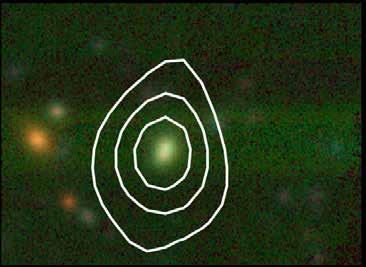
OHM_ImageOverlay_HSC_NOBEAM.png: Colour image of the host galaxy of the OH megamaser in visible light, obtained with the Hyper Suprime-Cam (HSC) on the 8.2m diameter Subaru Telescope, overlaid with white contours representing MeerKAT’s detection of the OH emission “peak”.
Artist's impression of a hydroxyl maser. Inside a galaxy, merger are hydroxyl molecules, composed of one atom of hydrogen and one atom of oxygen. When one molecule absorbs a photon at 18cm wavelength, it emits two photons of the same wavelength. When molecular gas is very dense, typically when two galaxies merge, this emission gets very bright and can be detected by radio telescopes such as the MeerKAT. © IDIA/LADUMA using data from NASA/StSci/SKAO/MolView
Dr Glowacki worked along with researchers from the University of the Western Cape, the University of Cape Town, Rhodes University, the South African Radio Astronomy Observatory, and the South African Astronomical Observatory, along with colleagues from 12 other countries.
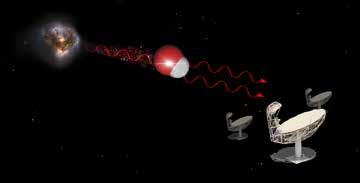
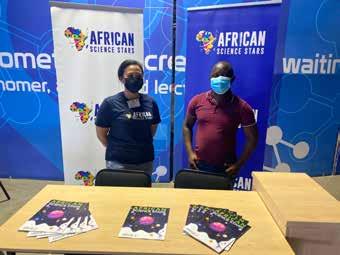

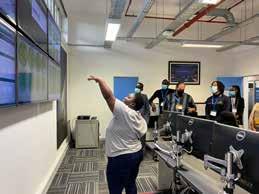
African Science Stars on the go!
CAREER SUMMIT AT THE NELSON MANDELA BAY SCIENCE AND TECHNOLOGY CENTRE
The three-day exhibition took place at the science centre in Uitenhage where the African Science Stars team, along with Charles Takalana from AfAS, engaged with many students from across the Eastern Cape province, encouraging them to consider Astronomy as a career choice and sharing the many opportunities available.
THE MEERKAT CONTROL ROOM
Delegates attending the AfAS conference were treated to a visit to the MeerKAT control room, to see where the magic happens. MeerKAT is a radio telescope array that consists of 64 antennas and is located in the Karoo, in the Northern Cape of South Africa. The dishes are fully controlled from the control centre, located at the SARAO office in Cape Town.
JOINT SANSA SCHOOL OUTREACH
The African Science Stars outreach team
joined the SANSA mobile outreach team as they visited various schools in the Western Cape, talking to students about Space Science and the countless opportunities in the field. The team thoroughly enjoyed interacting with the young future scientists.


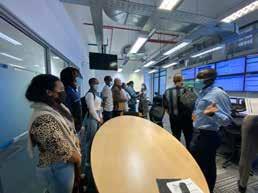

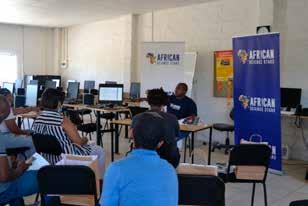
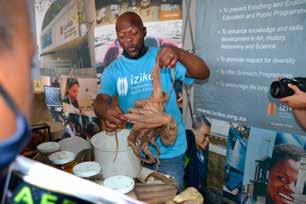
SUTHERLAND TRIP AND WORKSHOP
The trip to Sutherland was filled with many exciting activities. The first evening started off with stargazing through a telescope at the SAAO site. The next morning we visited the Southern African Large Telescope (SALT) and ended the weekend off with a community-based citizen journalism workshop hosted by Unathi Kondile, the Editor of African Science Stars.
PHILLIPI VILLAGE OUTREACH
The theme of the Elvis Amor and Phillipi Village Science Day event was ‘Youth in Science and Robotics’. The event was organised to showcase the talents of the youth from Phillipi, Cape Town, as well as to encourage and assist them to make informed career decisions in the STEM field.


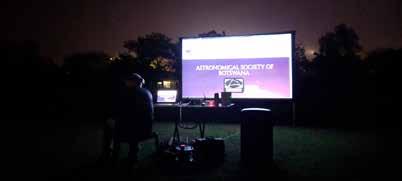
BOTSWANA WORKSHOP
The team visited the Botswana International University of Science and Technology (BIUST) and Editor Unathi Kondile hosted a citizen journalism workshop, encouraging students to get involved in communicating astronomy through platforms like African Science Stars. The team were also invited to a beautiful stargazing event that took place in Gaborone, organised by Diamonds in the Sky.










